
Mammillaria polyedra Photo by: Amante Darmanin
Growing habit Near Cuicatlan, Oaxaca, Mexico.
Origin and Habitat: Mammillaria polyedraSN|33807]]SN|33807]] is endemic to Mexico, where it is known to occur in the States of Guerrero, Oaxaca and Puebla. Although it has a relatively restricted range (extent of occurrence less than 20,000 km), the species is locally abundant.
Altitude range: 900 to 1,900 metres above sea level.
Habitat and Ecology: This cactus grows in tropical deciduous forest where it often and occurs in huge colonies. There are currently no major threats to this species.
Synonyms:
Common Names include:
ENGLISH: Many bristles cactus, Poliedric cactus
RUSSIAN (Русский): Маммиллярия многосторонняя
SPANISH (Español): piña cimarrón, Biznaga de muchas cerdas, Biznaga lechuda
Description: Mammillaria polyedraSN|33807]]SN|33807]] is a low growing cactus, solitary at first, later branching to form colonies or cushions. It can only be identified when in flowers, because in its vegetative state it is difficult to separate from other species in the polyedra group.
Stems: Globose to short cylindrical or somewhat thicker above, deep green, to 30 cm high, 10-12 cm in diameter.
Tubercles: 12 mm long, pyramidal, flattened dorsally, 6- or 7-angled, pointed with latex; axils of tubercles with wool and bristles.
Radial spines: 4-6, ascending, straight, short, brownish yellow or greyish with purplish tips, 6-25 mm long, upper ones longest and strongest.
Central spines: None.
Flowers: Inconspicuous, pink or reddish, to 25 mm long. Inner perianth-segments short-acuminate. Anthers white. Style white, longer than the stamens. Stigma-lobes 8, greenish
Fruits: Wide, club shaped, red.
Seeds: Brown.
Bibliography: Major references and further lectures
1) Nathaniel Lord Britton, Joseph Nelson Rose “Cactaceae: Descriptions and Illustrations of Plants of the Cactus Family” volume 4, 1923
2) David Hunt, Nigel Taylor “The New Cactus Lexicon” DH Books, 2006
3) John Pilbeam (1999) “Mammillaria The Cactus File Handbook” Nuffield Press.
4) Edward F. Anderson “The Cactus Family” Timber Press, 2001
5) Arias, M.S., Gama, S. and Guzmán, U. “Flora del Valle de Tehuacán-Cuicatlán”. Fasículo 14. Cactaceae A.L. Juss. Instituto de Biología, UNAM, Mexico. 1997.
6) IUCN. 2013. “IUCN Red List of Threatened Species” (ver. 2013.1). Available at: http://www.iucnredlist.org. (Accessed: 12 June 2013).
7) Jiménez-Ramírez, J. M. Martínez-Gordillo, S. Valencia-Ávalos, R. Cruz-Durán, J.L. Contreras-Jiménez, E. Moreno-Gutierréz & J. Calónico-Soto. “Estudio florístico del municipio de Eduardo Neri, Guerrero”. Anales del Instituto de Biología, Serie botánica 74: 79-142. 2003.
8) Méndez-Larios, I., R. Lira, H. Godínez-Alvarez, P. Dávila and E. Ortiz. “Proposal for the establishment of the core zones in the Biosphere Reserve of Tehuacán-Cuicatlán, Mexico.” Biodiversity and Conservation 15: 1627-1659. 2006
9) Ulises Guzmán, Salvador Arias, Patricia Dávila “Catálogo de cactáceas mexicanas.” Universidad Nacional Autónoma de México, Mexico-State 2003
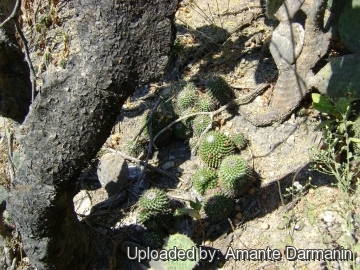 Mammillaria polyedra, Oaxaca, Mexico. Photo by: Amante Darmanin
Mammillaria polyedra, Oaxaca, Mexico. Photo by: Amante Darmanin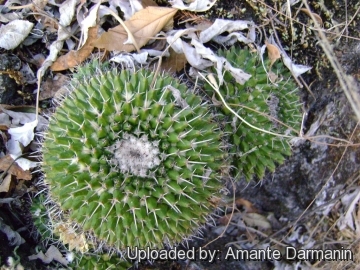 Mammillaria polyedra, Oaxaca, Mexico. Photo by: Amante Darmanin
Mammillaria polyedra, Oaxaca, Mexico. Photo by: Amante Darmanin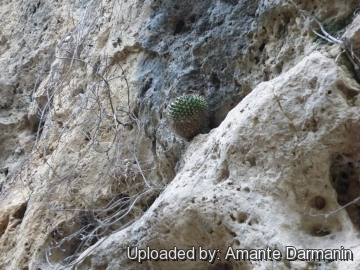 Mammillaria polyedra, Oaxaca, Mexico. Photo by: Amante Darmanin
Mammillaria polyedra, Oaxaca, Mexico. Photo by: Amante Darmanin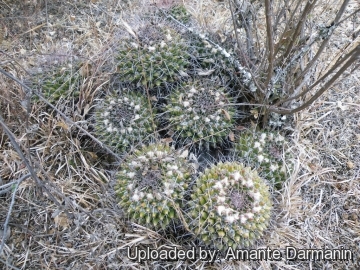 Mammillaria polyedra, Oaxaca, Mexico. Photo by: Amante Darmanin
Mammillaria polyedra, Oaxaca, Mexico. Photo by: Amante Darmanin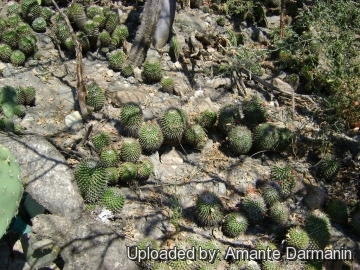 Mammillaria polyedra Photo by: Amante Darmanin
Mammillaria polyedra Photo by: Amante DarmaninSend a photo of this plant.The gallery now contains thousands of pictures, however it is possible to do even more. We are, of course, seeking photos of species not yet shown in the gallery but not only that, we are also looking for better pictures than those already present.
Read More... Cultivation and Propagation: It is a fairly easy plant to grow, don't requires any special treatment, but need as much light as possible without burning the plant to encourage the heaviest spine formation, if kept too dark it may become overly lush and greener and could be prone to rotting due to over watering.
During the summer it is best to keep the plants outside where the temperature can rise to over 30 C with no harm to the plant. Furnish good drainage and use a an open and free draining mineral compost that allows therefore roots to breath. They like only a short winter's rest and should be kept almost completely dry during the winter months, If the soil is allowed to be dry for too long root loss could follow but equally the same result would occur if the plants are both wet and cold. From March onwards the plant will begin to grow and watering should be increased gradually until late May when the plant should be in full growth.
Water regularly during the summer so long as the plant pot is allowed to drain and not sit in a tray of water. During hot weather you may need to water the plants more frequently so long as the plant is actively growing. From late September watering should be reduced to force the plant to go in to a state of semi dormancy, by October you should be back in to the winter watering regime.
Feeding may not be necessary at all if the compost is fresh then, feed in summer only if the plant hasn't been repotted recently. Do not feed the plants from September onwards as this can cause lush growth which can be fatal during the darker cold months. Grown specimens resist to -4°C for a short time, but it is best to keep above 0° C to avoid ugly spots on the plant epidermis.
Propagation: Seeds or by stem cuttings from adult plants.















